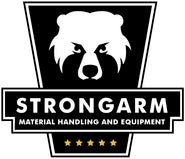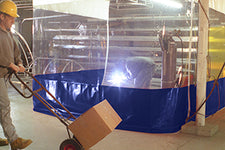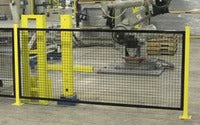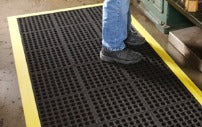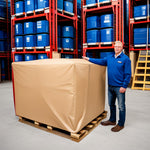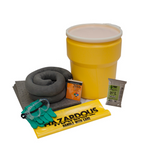How Draft Curtains Contain Fire Before Sprinklers Kick In
When we talk about fire safety, using sprinklers is the first thought that comes to our minds. Undeniably, sprinkler systems are a life-saving technology. But there’s still a fact most people haven’t realized yet: smoke is a more dangerous concern than flames. Smoke isn’t only toxic. It spreads with an unexpected speed (even before the fire heat triggers sprinklers).
Fire outbursts can be fatal. In such time-sensitive situations, it doesn’t make sense to wait even a couple of seconds for sprinklers to activate. So, what to do if the smoke wraps the entire building in just a few moments?
The answer is to adopt a smart engineering solution that starts working even before the sprinklers kick in: the draft curtains.

Smoke Migration Explained: What Makes Smoke the Real Killer Instead of Fire?
Before diving into draft curtains, it’s essential to understand why smoke is the culprit. In an incident of fire, smoke rises quickly. It hits the ceiling till it forms a hot, thick layer. This layer spreads horizontally and then penetrates the entire space of a building. This process is known as smoke migration.
The uncontrolled smoke travels through doors, vents, windows, gaps, shafts, or small openings. The smoke also contains superheated air, soot, and toxic gases. All these are the main causes of fire-related injuries and fatalities due to smoke inhalation.
At worst, smoke migration can delay the activation of sprinklers – causing a life-threatening scenario for people trying to evacuate. Besides reducing visibility during the evacuation phase, smoke migration also damages valuable inventory, sensitive equipment, and the entire building structures. That’s when draft curtains come to the rescue.
How Draft Curtains Work Before Sprinklers Play Their Role
Designed with fire-resistant material, fiberglass, or sheet metal, draft curtains are specialized barriers that suspend from the ceiling. These non-combustible curtains divide high ceilings of large spaces into compartmentalized zones to make smoke control possible. They are structured in a way that they direct the spread of smoke towards roof openings or exhaust vents.
Draft curtains have a strategic placement in open spaces including warehouses, offices, manufacturing plants, shopping centers, and atriums. Their primary objective is to manage the harmful smoke and save lives before the sprinkler systems activate. This proactive approach towards smoke management helps maintain breathable air so everyone inside the building can evacuate as soon as the fire starts.
In other words, draft curtains help enhance the efficiency of sprinklers by accomplishing integrated fire safety. To understand how draft curtains act immediately to limit the spread of deadly smoke, let’s look at each step of the process:
Step 1: A warehouse or a large industrial space catches fire.
Step 2: Hot gases and smoke immediately travel upwards while touching the ceiling.
Step 3: Draft curtains contain the smoke by confining it to smaller zones while preventing its penetration to the entire building.
Step 4: Since the hot gases and smoke are contained by draft curtains, the environment heats up rapidly.
Step 5: This intense heat enables immediate activation of sprinklers. The sprinklers’ rapid response due to concentrated heat provided by draft curtains helps extinguish fire as soon as it ignites. That way, the proactive functionality of draft curtains makes sprinklers act faster.
High-Risk Industries Where Draft Curtains and Sprinklers MUST Work Together for Fire Safety
Industrial fires can wreak havoc on even the most protected assets. That’s why sprinklers depend on draft curtains to do the job. By partnering together, they combat smoke in the following industries:
Open, large warehouses and distribution centers: Both fire and smoke can damage large volumes of inventory. Draft curtains help trigger a targeted, fast sprinkler response so that it can use fewer heads to control the fire. Since fewer sprinkler heads are activated immediately, this reduces the need to activate all available sprinklers. This minimizes the chances of water damage that could directly spoil the entire inventory.
Assembly and manufacturing plants: Heavy-duty industrial applications often involve hazardous processes such as welding and painting. During a fire event, draft curtains contain intense heat and deadly smoke within a confined zone while shielding adjacent workstations and machinery. The heat buildup triggers sprinkler systems immediately over the specific machinery that’s most prone to fire damage. Draft curtains allow precise usage of sprinkled water. That way, it doesn’t damage sensitive machinery or electronics.
Aircraft hangars: It’s challenging to suppress aircraft fuel fire because of the immense volume of the hangar’s ceiling. Due to the massive ceiling, the heat takes more time to activate sprinkler systems. This can lead the fire to spread rapidly to other aircraft. Draft curtains create a “hot space” over the aircraft fuel fire. This way, the heat cannot stratify, thus, leading to immediate activation of sprinklers.
Storage facilities with robotic systems: In automated storage facilities, goods are usually stored on high racks. Robots access these goods by moving vertically. Smoke or fire can directly disable the robotic sensors in a fire incident. This might stop robotic operations completely. Draft curtains compartmentalize the aisles so the smoke can be trapped within affected zones only. The sprinklers activate only within those specific zones. This prevents excessive water from causing any short-circuit in robotic systems.
Other Benefits of Draft Curtains
While draft curtains start working even before sprinklers activate, these special barriers also contribute to the operational efficiency of the overall building in the following ways:
Protection for electrical and structural components: By restricting smoke within compartmentalized zones, draft curtains prevent temperature from building up under ceilings. Temperature control helps eliminate the risk of thermal damage by protecting electrical conduits and ceiling-mounted electrical components within warehouses and other high-ceiling facilities. This extends the operational lifespan of electrical assets and minimizes fire-induced restoration costs.
Compliance with regulatory standards: Various fire safety regulatory authorities as well as OSHA require industrial business owners to implement fire control initiatives. Installing smoke curtains and automatic sprinklers can help businesses comply with specific fire safety regulations. It also helps them avoid any penalties.
Reduction in HVAC workload: Smoke curtains control air pathways so that the exhaust systems can remove contaminated air, smoke, and heat more efficiently. This results in a better airflow distribution and a higher HVAC efficiency.
The Takeaway
Fire safety isn’t just about having fire extinguishers and sprinklers in a building. Even firefighters might fail if the spread of smoke has already hindered their visibility during a fire emergency. Sprinklers do activate but sometimes it’s too late when the smoke has already done all the damage. Since urgency is the key, draft curtains can contain smoke before sprinklers start doing their job.
Draft curtains and smoke curtains are effective smoke control systems that can save precious lives during a fire outburst. However, it’s also wise to have some extra information beforehand. While buying the right draft curtains and smoke curtains, you can ask the manufacturer about their durability and any special instructions that should be followed for their maintenance and longevity.
Once you have selected the right smoke curtains and draft curtains, you can minimize the risks of experiencing smoke in your industrial facility. The trick is to get these installed professionals to achieve superior performance.

